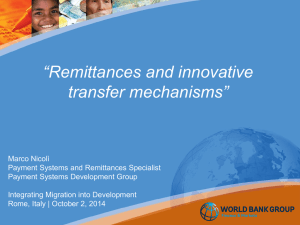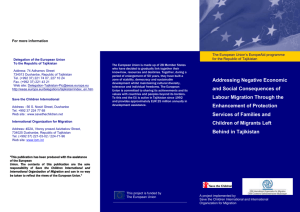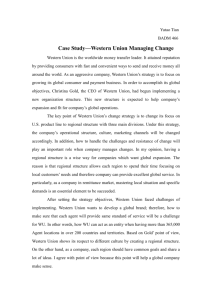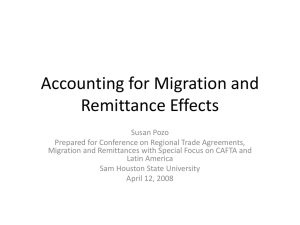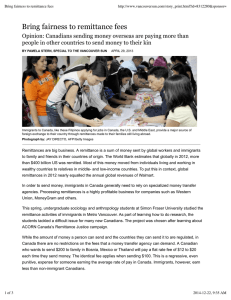B. Central Asia Paper on Migration and Remittances
advertisement
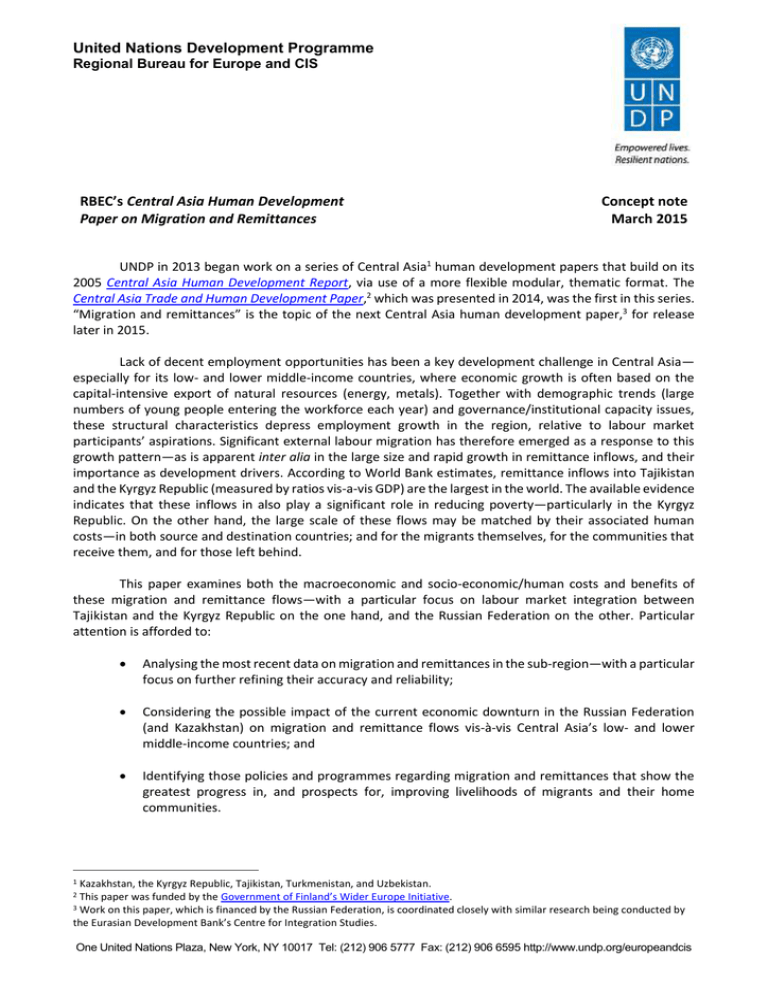
United Nations Development Programme Regional Bureau for Europe and CIS RBEC’s Central Asia Human Development Paper on Migration and Remittances Concept note March 2015 UNDP in 2013 began work on a series of Central Asia1 human development papers that build on its 2005 Central Asia Human Development Report, via use of a more flexible modular, thematic format. The Central Asia Trade and Human Development Paper,2 which was presented in 2014, was the first in this series. “Migration and remittances” is the topic of the next Central Asia human development paper,3 for release later in 2015. Lack of decent employment opportunities has been a key development challenge in Central Asia— especially for its low- and lower middle-income countries, where economic growth is often based on the capital-intensive export of natural resources (energy, metals). Together with demographic trends (large numbers of young people entering the workforce each year) and governance/institutional capacity issues, these structural characteristics depress employment growth in the region, relative to labour market participants’ aspirations. Significant external labour migration has therefore emerged as a response to this growth pattern—as is apparent inter alia in the large size and rapid growth in remittance inflows, and their importance as development drivers. According to World Bank estimates, remittance inflows into Tajikistan and the Kyrgyz Republic (measured by ratios vis-a-vis GDP) are the largest in the world. The available evidence indicates that these inflows in also play a significant role in reducing poverty—particularly in the Kyrgyz Republic. On the other hand, the large scale of these flows may be matched by their associated human costs—in both source and destination countries; and for the migrants themselves, for the communities that receive them, and for those left behind. This paper examines both the macroeconomic and socio-economic/human costs and benefits of these migration and remittance flows—with a particular focus on labour market integration between Tajikistan and the Kyrgyz Republic on the one hand, and the Russian Federation on the other. Particular attention is afforded to: Analysing the most recent data on migration and remittances in the sub-region—with a particular focus on further refining their accuracy and reliability; Considering the possible impact of the current economic downturn in the Russian Federation (and Kazakhstan) on migration and remittance flows vis-à-vis Central Asia’s low- and lower middle-income countries; and Identifying those policies and programmes regarding migration and remittances that show the greatest progress in, and prospects for, improving livelihoods of migrants and their home communities. 1 Kazakhstan, the Kyrgyz Republic, Tajikistan, Turkmenistan, and Uzbekistan. This paper was funded by the Government of Finland’s Wider Europe Initiative. 3 Work on this paper, which is financed by the Russian Federation, is coordinated closely with similar research being conducted by the Eurasian Development Bank’s Centre for Integration Studies. 2 One United Nations Plaza, New York, NY 10017 Tel: (212) 906 5777 Fax: (212) 906 6595 http://www.undp.org/europeandcis

